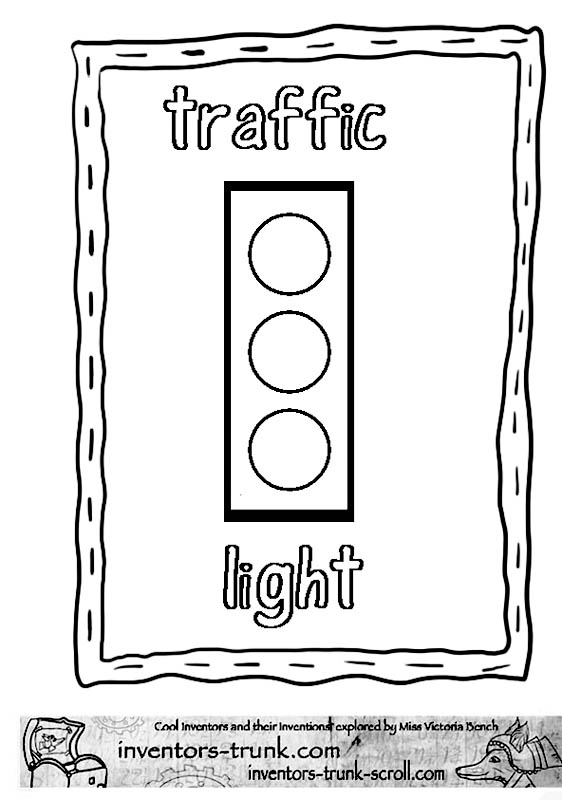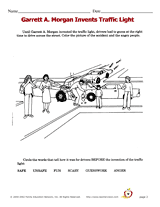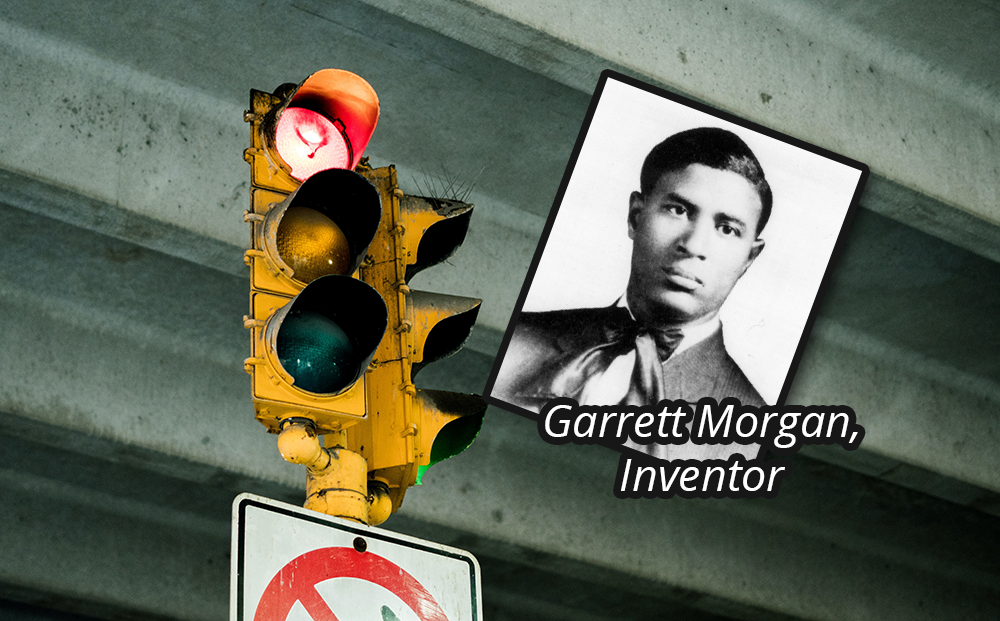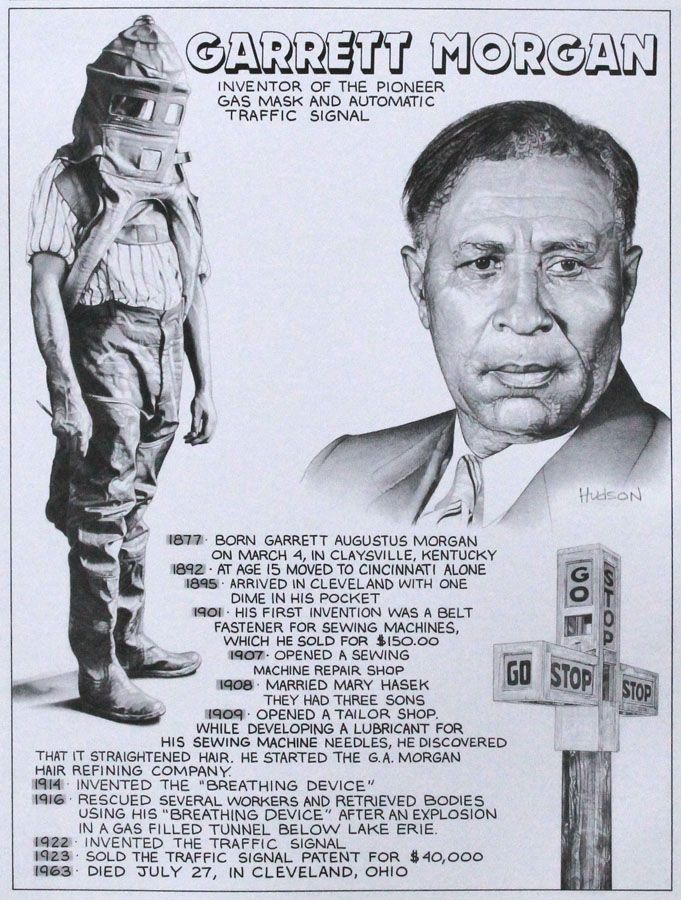Garrett Augustus Morgan was a remarkable African American inventor who made significant contributions to society. One of his most notable inventions was the traffic light, which revolutionized transportation and road safety. Born on March 4, 1877, in Paris, Kentucky, Morgan’s ingenuity and perseverance allowed him to overcome numerous obstacles and leave a lasting impact on the world.
 Gas Mask Invention
Gas Mask Invention
Before diving into his remarkable contribution to traffic safety, it is important to highlight Morgan’s equally important invention - the gas mask. In the early 1900s, he developed a breathing device that protected wearers from harmful gases and smoke inhalation. The invention gained significant recognition during the Cleveland Waterworks Tunnel Disaster in 1916 when Morgan and his brother used their gas masks to rescue workers trapped underground. This courageous act saved several lives and showcased the effectiveness of the gas mask.
 Traffic Light Invention
Traffic Light Invention
Morgan’s most renowned invention, the three-position traffic light, transformed the way we navigate roads and improved traffic flow immensely. Prior to his innovation, traffic signals were primarily operated manually by police officers. However, this system was time-consuming and often led to confusion and accidents. Seeking a solution, Morgan developed a traffic signal that automatically controlled the flow based on the changing needs of the intersecting roads.
His traffic light invention featured three signal lights: red, green, and amber, which have become universally recognized symbols for stop, go, and prepare to stop, respectively. This innovation not only improved road safety but also facilitated efficient traffic management in busy urban areas. Morgan’s traffic light was patented on November 20, 1923, and laid the foundation for the modern traffic control systems we see today.
 Impact on Education
Impact on Education
The impact of Garrett Morgan’s inventions extends beyond their direct applications. His achievements have been celebrated during various educational events, such as Black History Month, where students learn about the contributions of African American inventors and pioneers. Teachers often use printable materials featuring Morgan’s traffic light invention to engage students in interactive activities centered around his story.
 Celebrating Black History Month
Celebrating Black History Month
Black History Month provides an excellent opportunity to honor the achievements of inventors like Garrett Morgan. Craft activities that focus on his inventions, such as the traffic light, allow children to learn about his accomplishments while having fun. These activities promote awareness, foster creativity, and inspire students to pursue their own dreams in the field of science, technology, engineering, and mathematics (STEM).
 Preschool Lesson Plan
Preschool Lesson Plan
Preschool lesson plans often incorporate themes related to history and invention, making Garrett Morgan a notable figure during Black History Month. Teachers utilize his traffic light invention to introduce young learners to the concept of traffic safety and shape their understanding of why we follow specific signals while crossing roads. Through interactive discussions, visual aids, and hands-on activities, children develop a foundational understanding of Morgan’s contribution and the importance of road safety.
 Education for Older Students
Education for Older Students
Garrett A. Morgan’s inventions can also be explored in more depth by older students, such as those in second to fifth grade. Printable materials are available that delve into the intricacies of his inventions and encourage critical thinking. Students can learn about the technical aspects of traffic light mechanisms, engage in discussions about engineering principles, and even design their own traffic light models. These activities help foster a deeper understanding of Morgan’s inventions and the impact they have had on society.
 Patent for the Traffic Light
Patent for the Traffic Light
On November 20, 1923, Garrett Morgan was granted a patent for his three-position traffic light. This patent solidified his invention as a significant technological breakthrough and set the stage for its widespread adoption. The patent document itself serves as a testament to Morgan’s ingenuity and serves as a historical marker of his accomplishments in the field of traffic safety.
 Inspiring Visionaries
Inspiring Visionaries
Garrett Morgan’s impact transcends his inventions, reaching into the realm of inspiration and motivation. As an African American inventor during a time of racial inequality, his success story serves as a beacon of hope for aspiring innovators. Morgan’s perseverance, determination, and groundbreaking inventions inspire young minds to dream big and pursue their goals relentlessly, regardless of societal barriers.
 Art Activity: Traffic Lights
Art Activity: Traffic Lights
Another way to honor Garrett Morgan’s legacy is through art activities centered around traffic lights. This allows students to express their creativity and engage with his invention on a more personal level. Artistic projects involving cutting, coloring, and crafting traffic lights serve as a tangible reminder of Morgan’s contributions while fostering individual expression and promoting a sense of accomplishment.
 Question for the Museum
Question for the Museum
Garrett Morgan’s impact on history is so significant that he continues to be the subject of research and exhibits in various museums. His fascinating story and inventions raise important questions about innovation, racial equality, and the power of determination. Museums today explore these topics through displays, interactive exhibits, and thought-provoking questions that encourage visitors to reflect on the legacy and impact of remarkable individuals like Garrett Augustus Morgan.
In conclusion, Garrett Morgan’s inventions have left an indelible mark on society, improving road safety and inspiring generations of future inventors. His gas mask and traffic light inventions revolutionized their respective industries and saved countless lives. Through educational activities, art projects, and museum exhibits, Morgan’s legacy continues to be celebrated and serves as a reminder of the power of innovation, resilience, and determination.